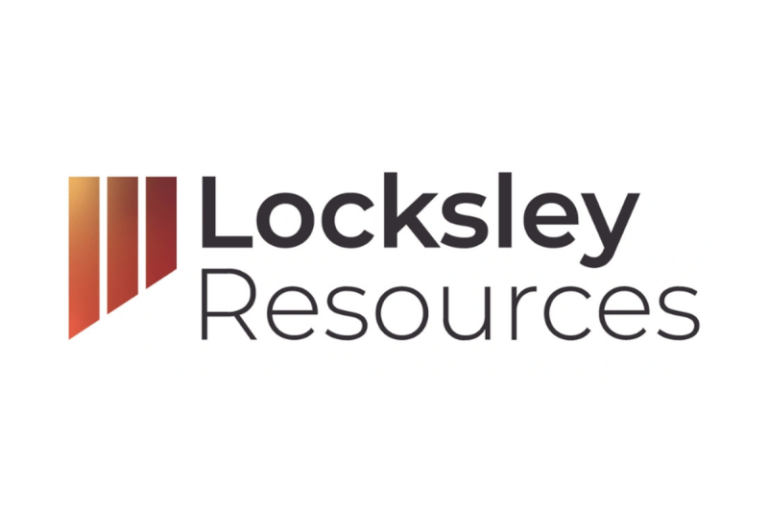The oil market struggled in Q3 as prices continued to soften under mounting supply pressure.
Following moderate gains in H1, prices contracted through Q3, ending the quarter lower than their July 1 start positions.
Brent crude started the period at US$67.10 per barrel and finished at US$65.90, a 1.7 percent decline. Similarly, West Texas Intermediate (WTI) entered the 90 day session at US$65.55 per barrel, slipping to US$62.33 by September 30.
In its recently released energy, oil and gas report for the third quarter, Deloitte attributes the summer price slump to rising global oil inventories and OPEC+ easing production cuts sooner than expected.
“OPEC+ recently announced a 137 million barrels per day (MMbbl/d) production quota increase for October, beginning the reversal of 1.65 MMbbl/d of voluntary cuts that were originally set to stay in place through 2026,” it reads.
Supply has also exceeded demand in the US by 1.6 MMbbl/d between May and August, according to the US Energy Information Administration (EIA), fueling projections of further stock builds for the remainder of the year.
“We expect inventory builds will average 2.1 MMbbl/d in the second half of 2025 and will remain elevated through 2026, putting significant downward pressure on oil prices,” the EIA notes in its September short-term energy forecast.
WTI price performance, December 31, 2024, to October 6, 2025.
Oil prices under pressure amid rising inventories, sluggish demand
Such gains are unusual for the shoulder season, when demand typically dips to around 103 million to 104 million barrels per day, compared to 106 million in summer and winter, Schachter pointed out.
On the flip side, global oil demand in the third quarter remained subdued, with growth projections of approximately 700,000 barrels per day (bpd) for both 2025 and 2026, according to the International Energy Agency (IEA).
This marks a significant slowdown compared to the 2.8 percent growth observed in 2024.
The IEA attributes this deceleration to factors such as high interest rates, economic uncertainties and structural shifts in energy consumption patterns. Looking ahead, the organization projects a modest rebound in global oil demand, with an anticipated increase of 700,000 bpd in 2026. However, this growth is contingent upon factors such as economic stabilization, energy policy developments, and potential shifts in global trade dynamics.
“Demand is weaker. Inventories are high, OPEC is raising production, and so we have all of that, and we think that we’re going to see WTI below US$60,” said Schachter, adding that he expects to see WTI values sink to the US$56 to US$59 range in the fourth quarter.
Geopolitical tensions drive oil price volatility
Much of the oil price volatility exhibited in the third quarter was driven by geopolitical factors, according to Igor Isaev, Doctor of Technical Sciences, and head of Mind Money’s Analytics Center.
‘Prices have swung sharply, driven by a complex interplay of geopolitical flashpoints, punitive trade policies and structural changes in supply dynamics. From Tehran to Texas, the forces shaping global energy are no longer cyclical — they’ve become groundbreaking, unveiling symptoms of a broader recalibration of energy security and sovereignty.”
As Isaev explained, while these forces aren’t new, they have been especially impactful amid heightened global strife.
“At the heart of recent volatility lies a familiar trio: tariffs, conflict and fragility. US-China trade tensions have resurfaced in the form of targeted energy tariffs, while carbon border adjustments in Europe have added further complexities to global flows,” the expert explained. “Meanwhile, geopolitical instability in Iran, Venezuela, Russia and parts of Africa continues to inject a risk premium into every barrel.”
Despite all the market turbulence, Isaev noted that one steady factor persists — US shale’s balancing act. Once the industry’s great disruptor, shale now serves more as a pressure valve during supply crunches than a growth engine.
However its flexibility is waning. Higher interest rates, escalating service costs and maturing geology, particularly in the Permian Basin, have shifted producers’ focus from expansion to efficiency, he said.
“Its role heading into 2026 will be stabilizing, but not leading.”
For Schachter, the weak price environment falls below the incentive price for US shale producers.
Currently, shale production remains resilient, hitting 13.5 million barrels per day the first week of October, up 200,000 barrels from last year, he said. Producers continue to tap high-quality, tier-one reserves using advanced techniques like longer-reach, multi-leg wells and improved completions, keeping some operations profitable even at US$61.
Oil and gas M&A volume slows, but values surge
As uncertainty abounds companies continue to shy away from deal making. An August report from Wood Mackenzie notes that deal activity in 2025 is down 10 percent, to only 85 sector wide by mid-August.
“The number of deals has been declining progressively since 2022, making this the seventh consecutive half-year drop, with volumes now well below the ten-year average,” the firm’s analysis reads.
Despite the volume decline, values are on the rise.
“At US$71 billion, the overall value of disclosed deals was higher than the half-year average for the last five years, and a huge 80% higher than the unusually low total for the previous half year,” the report continues.
One of the largest deals announced during the quarter was Crescent Energy’s (NYSE:CRGY) acquisition of Vital Energy (TSXV:VUX,NYSE:VTLE), an all-stock deal valued at US$3.1 billion.
The deal will birth one of the 10 largest independent oil and gas producers in the US. The combined company will operate across major basins, including the Eagle Ford, Permian and Uinta.
Although deal volumes have retracted, both Isaev and Schachter anticipate majors heading to market in an effort to bolster their market share.
“M&A activity in North America is likely to accelerate,” said Isaev. “Consolidation will be driven not by land grabs, but by strategic repositioning — especially in LNG, CCS and low-carbon petrochemicals. I expect deals prioritizing operational efficiency, reserve quality and transition alignment over immediate revenue effect.”
For Schachter, majors play a pivotal role in securing today’s oil supply, as well as in funding the innovation for future oil production. “You’re always going to see the big boys go after the medium boys,” he said. “Once you find a good asset, you want to control more and more of it, so you buy other people up. So I think consolidation will be there.”
He went on to note that new technology will open up more plays offshore in the Gulf of Mexico.
“We haven’t really talked a lot about discoveries in the Gulf of Mexico for a long time; I think there will be new technology that will be applied to drilling,’ Schachter commented.
Accessing these offshore assets will not be cheap, as he estimates the wells there could cost upwards of US$50 million wells compared to under US$10 million for an onshore well.
“So that’s going to require the big boys to do that. But the prizes can be there, as we found with Guyana,” said Schachter, pointing to the Caribbean nation’s growth from no output to over 600,000 barrels per day currently.
Gas demand weakens as LNG expansion fuels potential Asian growth
After a sharp rebound in 2024, global natural gas demand slowed notably in the first half of 2025 as high prices, tight supply and economic uncertainty curbed consumption.
That was particularly true in Asia, where both China and India posted year-on-year declines.
Starting the third quarter at US$3.43 per million British thermal units, natural gas values contracted through July and August sinking to a year-to-date low of US$2.73 on August 20, 2025.
Values have since regained lost ground ending the three month period in the US$3.35 range.
Natural gas price performance, December 31, 2024, to October 6, 2025.
As noted in the IEA’s Q3 gas market report, Europe’s LNG imports are on track to hit record highs this year, driven by storage needs and reduced Russian pipeline flows.
Meanwhile, China’s imports are falling amid weaker demand and competition for cargoes, and ongoing geopolitical tensions, including the Israel-Iran conflict, have added volatility and uncertainty to an already fragile market.
Isaev underscored the importance of geography and regional tensions in relation to the gas market.
“In the natural gas arena, the pivot is predominantly geographic. European demand has somewhat rebounded, driven by colder winters and a continued retreat from Russian pipeline gas,’ he said.
Asia, by contrast, has seen softer industrial demand and increased reliance on domestic coal. For Canadian and US producers, this shift presents a strategic opening,” Isaev continued.
He went on to explain that LNG export infrastructure expansion, from BC to the US Gulf Coast, and long-term contracts with European buyers are “becoming geopolitical tools as much as commercial deals.”
While Schachter sees moderate European demand growth due to sluggish economic expansion, the longer-term surge is expected from Asia. As he pointed out, countries such as Japan, South Korea, China and Vietnam, which lack domestic reserves, will increasingly import LNG from sources like Australia, Papua New Guinea, the Gulf Coast and Canada.
‘And prices (in Asia) might be US$11 to US$12 compared to US$3.50 in the US,” said Schachter.
Looking ahead, the EIA forecasts that LNG supply growth is expected to surge in 2026 — led by new output from the US, Canada and Qatar — easing market pressures and potentially reigniting demand across Asia.
Oil and gas market forecast for Q4
Moving into the rest of 2025 and early 2026, Schacter warned that weather remains a key wildcard for energy markets.
He recommended watching whether winter will be mild or unusually cold, as Arctic fronts could spike oil and natural gas prices. Early forecasts, including those from the Farmers’ Almanac, suggest a colder-than-normal winter, though factors like El Niño could influence outcomes and add further uncertainty.
The oil and gas sector veteran, who will be hosting his annual Catch the Energy conference in Calgary in mid-October, also cautioned that global geopolitical risks remain a key market driver. Any disruptions in strategic chokepoints like the straits of Malacca or Hormuz, which could block crude shipments, have the potential to push oil prices higher.
‘And if we do, that’s going to be very, very good for the industry.”
Isaev pointed to OPEC+ tactical production, US shale prioritizing capital discipline over output growth, and LNG shipments to Europe and Japan being increasingly influenced by geopolitical dynamics, as key trends to watch.
“When you factor in the ongoing tensions in the Middle East and West Africa, along with the regulatory shifts surrounding carbon pricing and exploration permits, it’s evident that 2025 isn’t just going to be volatile — it’s a year for strategic realignment,” he said. “The advantage will go to those who can skillfully navigate this complexity, foresee critical turning points and invest their capital with both accuracy and creativity.”
Securities Disclosure: I, Georgia Williams, hold no direct investment interest in any company mentioned in this article.
This post appeared first on investingnews.com










